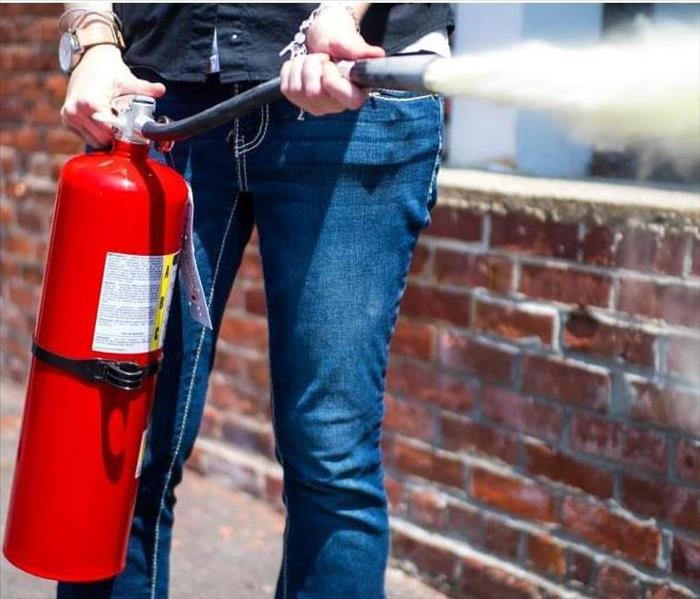Do You Know How to Clean Up Fire Extinguisher Residue?
8/4/2021 (Permalink)
Home fires may be terrifying, whether they are caused by an overloaded extension cord or a kitchen flare-up. Quick-thinking homeowners, on the other hand, can efficiently deal with these unexpected emergencies. But, once the fire has been out and the household calms, how should the mess be cleaned up?
That depends on the fire extinguisher type. Every household fire extinguisher model is branded A, B, or C, indicating the types of fires it can put out. Ordinary combustibles such as wood, paper, and cloth are classified as A; flammable liquids such as gasoline or cooking oil are classified as B; and live electricity is classified as C. The label also reveals the “ingredients” that battle the fire within the canister.
Most models contain a dry chemical that smothers the fire’s fuel with an inert solid because of their adaptability. After the extinguisher has been discharged, the solid settles over the area. Read the label to figure out what the powdery substance is, then put on gloves and a dust mask and clean up according to these guidelines:
Sodium bicarbonate and potassium bicarbonate: Vacuum thoroughly to remove all visible residue, making repeated passes over the affected areas. To neutralize the PH of the powder, use hot water mixed with a little vinegar. Allow for a few minutes of rest before rinsing with warm water.
Silicone types: Vacuum the residue thoroughly, making several passes to ensure that all visible residue is removed. To break down the silicone, spray the area with rubbing alcohol. Allow the solution to soak in for a few minutes before rinsing with warm water.
Monoammonium phosphate: Do not vacuum the monoammonium phosphate residue. The residue must be cleaned by hand as soon as possible; otherwise, it may cause further harm to sensitive electronics and other equipment. To begin, wipe away the residue using a clean towel. Clean using a mixture of warm water and baking soda on surfaces that may be wet washed. As needed, thoroughly dry and sanitize the area.
What happens if your fire extinguisher emits water or carbon dioxide? Both methods of cleanup are reasonably simple, but these compounds are used in very few home models nowadays. After turning off the electricity to the area, mopping is the best method for removing water. Carbon monoxide makes a minor mess that may not require special cleanup.
Finally, because that discharged fire extinguisher is only valid for one usage, replace it right away! Cleaning up after a fire? Turn to SERVPRO of Petaluma/Rohnert Park/Santa Rosa, which has the most up-to-date technology and personnel to make any disaster “Like it never even happened.”






 24/7 Emergency Service
24/7 Emergency Service
